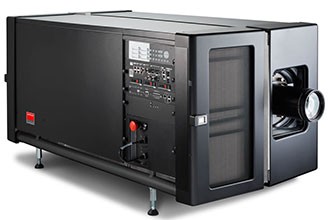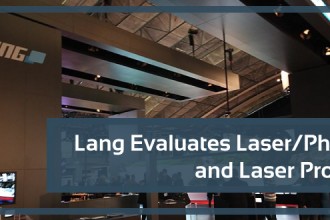Projectors: Lamps, LEDs, Lasers and Hybrid Illumination
T here are 3100 exhibitors here at CES, according to the Consumer Electronics Association and probably most of them are not building projectors or projector components. Projector components don’t show up too much on the show floor at CES since consumers don’t buy components like lasers, LEDs, microdisplays, etc. End users buy systems, and it is up to the manufacturers to make these systems as transparent to the buyer as possible.
here are 3100 exhibitors here at CES, according to the Consumer Electronics Association and probably most of them are not building projectors or projector components. Projector components don’t show up too much on the show floor at CES since consumers don’t buy components like lasers, LEDs, microdisplays, etc. End users buy systems, and it is up to the manufacturers to make these systems as transparent to the buyer as possible.
For example, consumers don’t like changing lamps. A lamp is a component and the consumer preference is that the lamp should stay hidden behind a door that never needs opening. Never mind that some lamp-based projectors feature a lifetime of 6000 hours and that may rise to 10,000 hours by the end of 2012. For many users, by the time a projector accumulates 6,000 hours, it is functionally obsolete so rather than replace the lamp, the user just replaces the projector. For some key markets like education, 4,000, 6,000 or 10,000 hours just isn’t enough.
End users want 20,000 – 30,000 hour lamp life? No problem. RGB LEDs have no problems meeting this target — in a 500 or so lumen projector. 300- to 500-lumen projectors are available from multiple vendors and have been available for a couple months. There have also been some LED projectors with higher output but in larger form factors and at higher prices.
For some users, 500 lumens is fine and Insight Media expects these projectors to do well (we recently reviewed the Acer K330 and ViewSonic PLED-W500 500-lumen projectors for subscribers of Mobile Display Report, and issued a new report on this class of microprojectors).
Like the microprojector market, the mainstream projector market continues to trend toward higher lumen products. Fifteen or 20 years ago, a 500-lumen projector was mainstream and considered pretty bright, but not in 2012. 2000 lumens was the lower limit for mainstream projectors for a while, but the trend is upward toward, and beyond, 2500 lumens.
Lasers will give you an almost arbitrarily bright projector. Kodak and now Barco have publicly demonstrated laser cinema projectors. These projectors are 1) not portable, 2) not cheap and 3) high powered laser devices that require special safety precautions. While a Class 2 laser projector in the 2000 – 2500 lumen range probably could be built, it probably would be priced out of the mainstream market.
One answer to these opposing desires among projector end users is the hybrid projector. The reason you can’t make brighter LED projectors is the restricted output of the green LED so just eliminate the green LED while keeping the red and blue LEDs. The use of a blue laser to stimulate a green phosphor to replace the green LED has been well demonstrated by Casio, who is now working on their second generation of hybrid projector design which offers outputs up to 4000 lumens in a good form factor and reasonable price.
 Does one company coming out with a projector family based on blue lasers exciting a green phosphor represent an industry trend? In this case, the answer is clearly yes. Insight Media has been told that at least three projector companies are going to issue press releases on their own hybrid technology projectors over the next couple of days. These announcements won’t necessarily come at CES: at least one will be made at a British conference and trade show for the education market.
Does one company coming out with a projector family based on blue lasers exciting a green phosphor represent an industry trend? In this case, the answer is clearly yes. Insight Media has been told that at least three projector companies are going to issue press releases on their own hybrid technology projectors over the next couple of days. These announcements won’t necessarily come at CES: at least one will be made at a British conference and trade show for the education market.
Insight Media will be taking a close look at the market and technology of hybrid projectors. The plan is to produce a market forecast for this illumination technology going forward to about 2017. Stay tuned, we think the future is bright.
Matt Brennesholtz is an analyst for Insight Media. Reach him at matt@insightmedia.info





